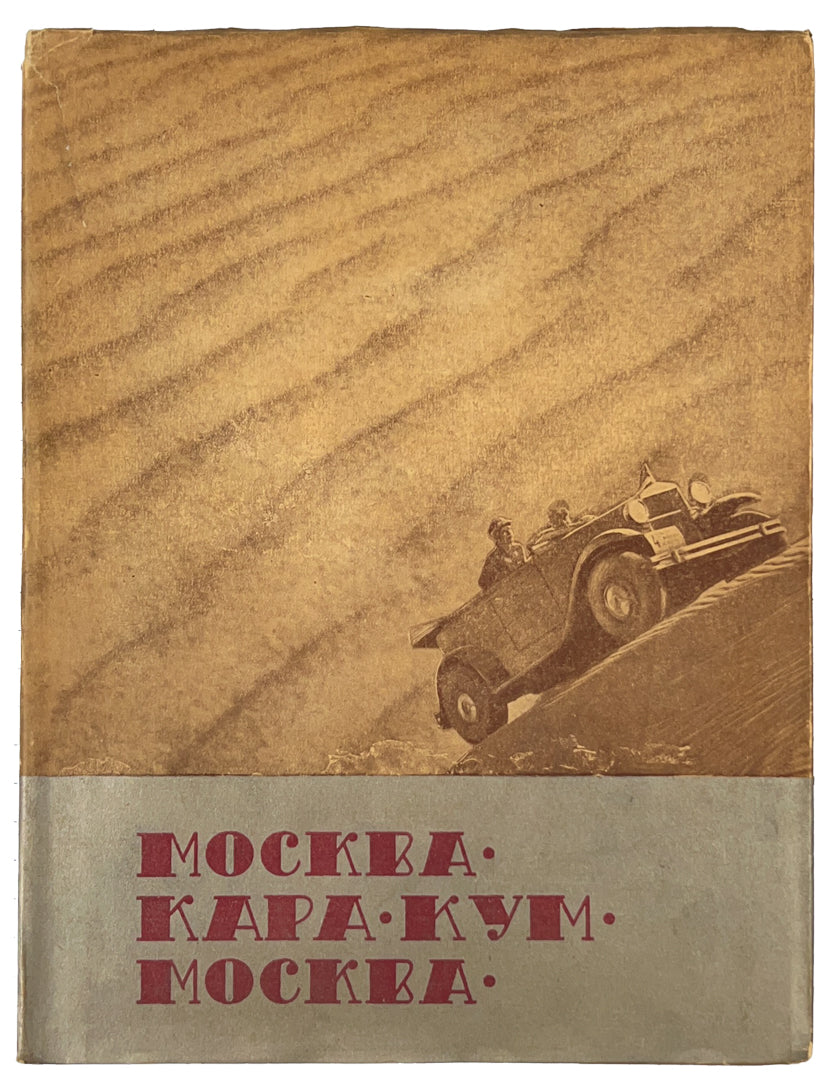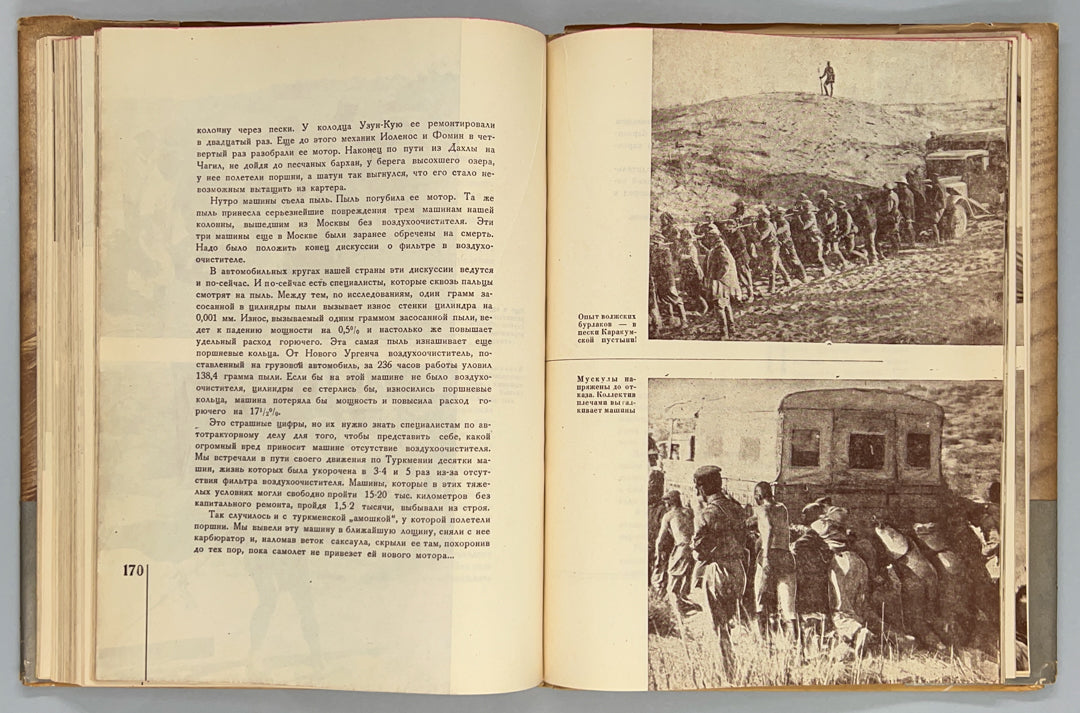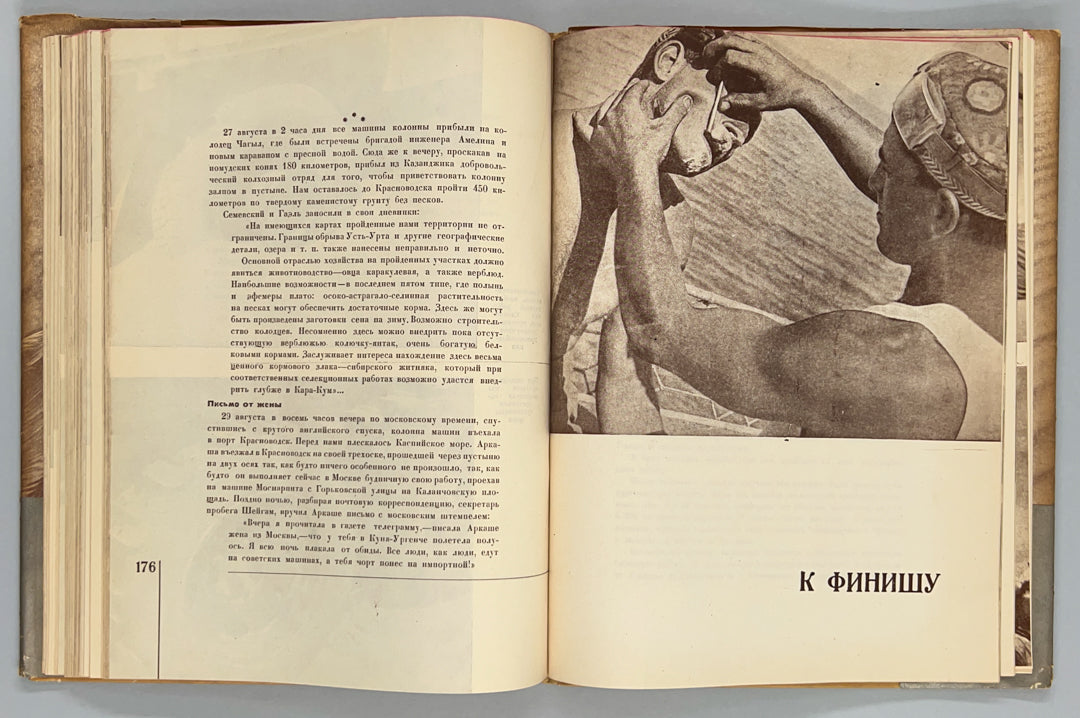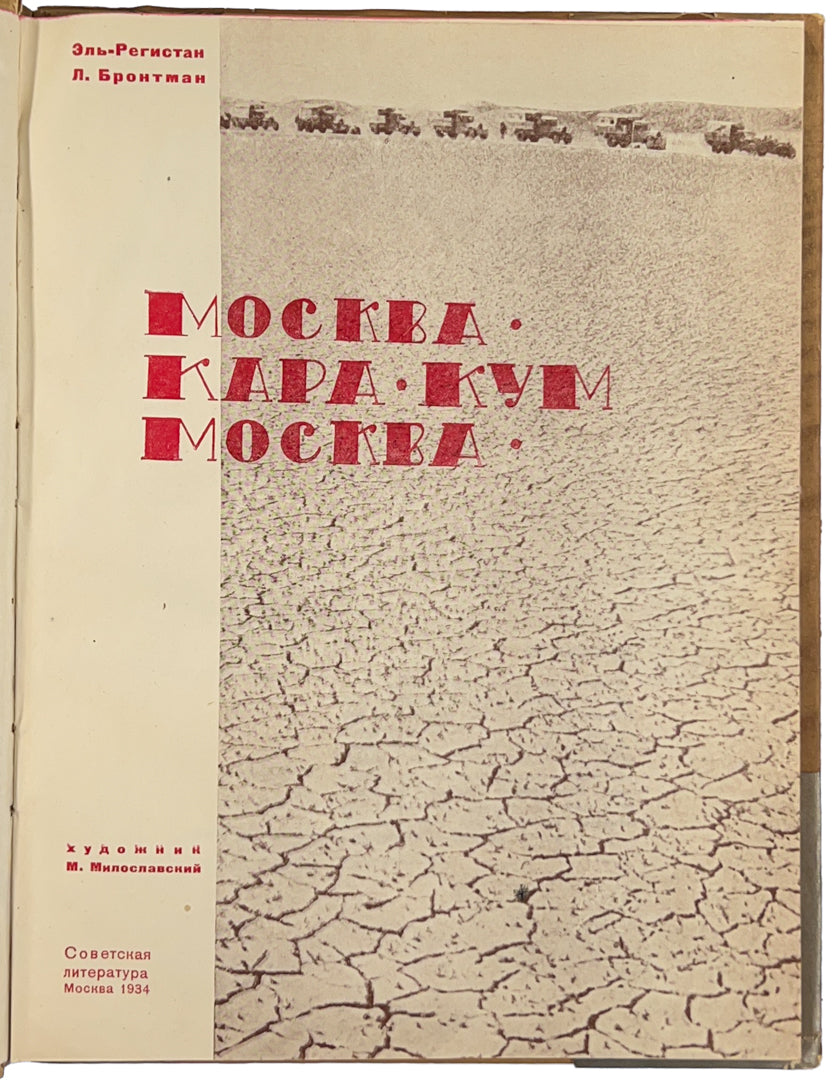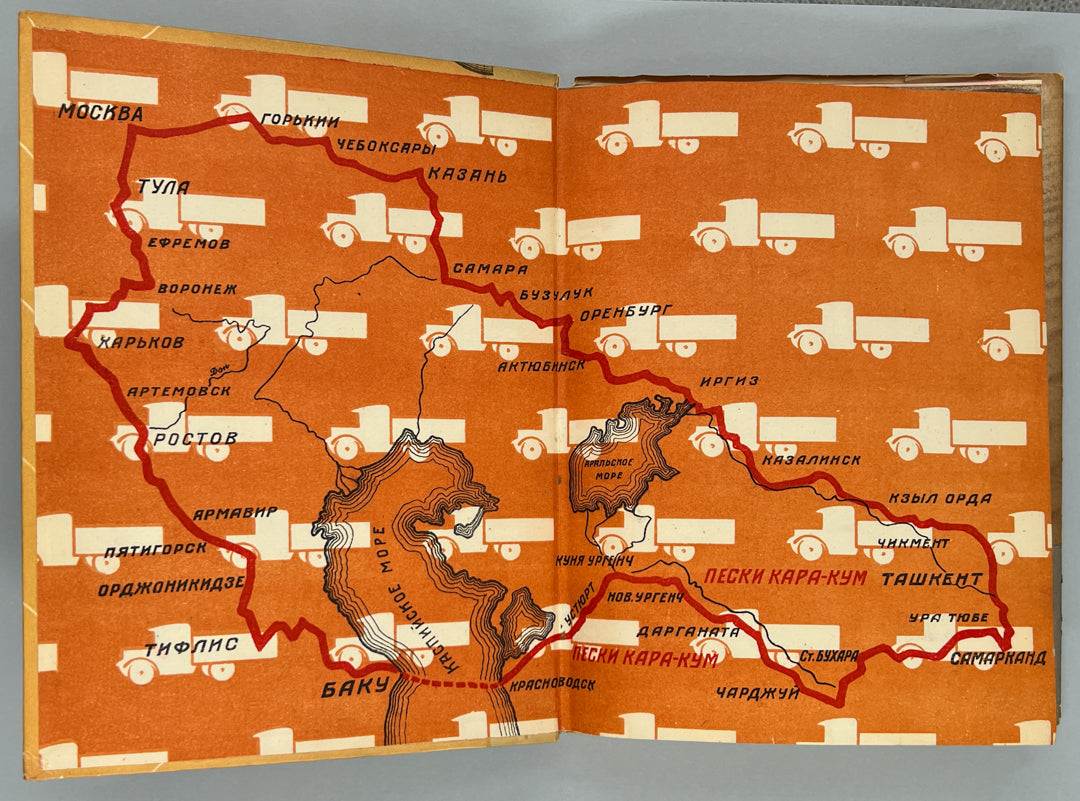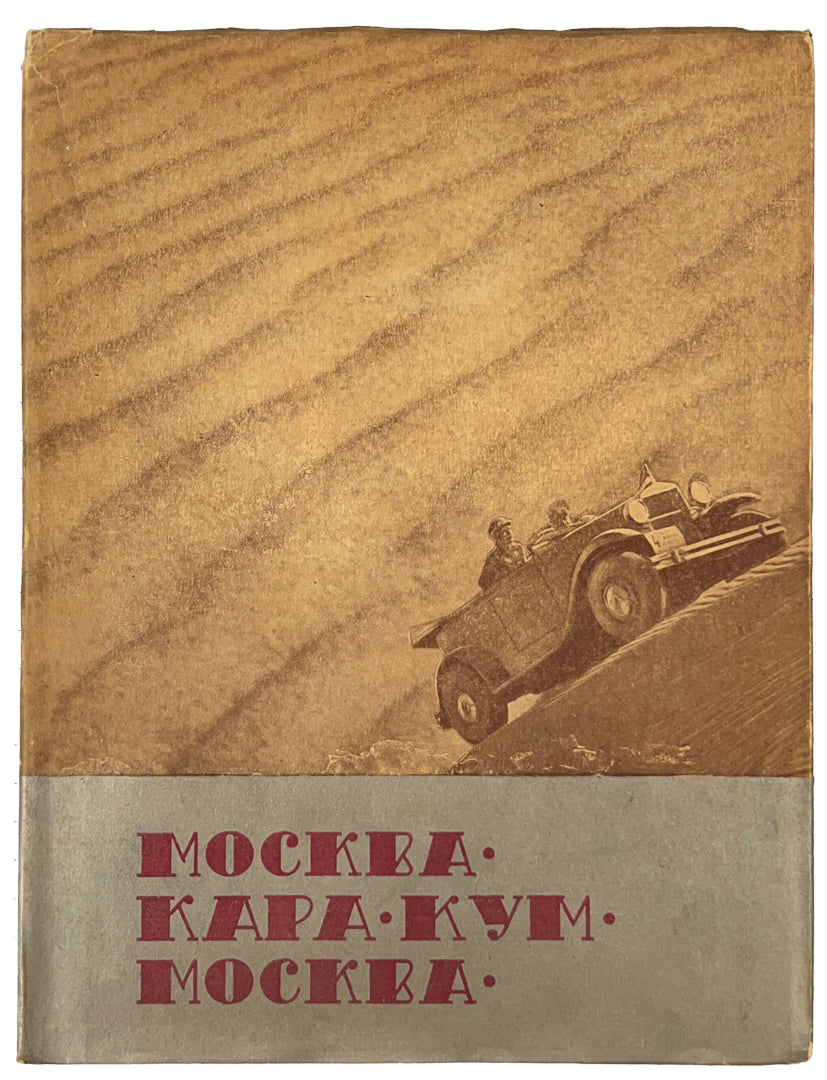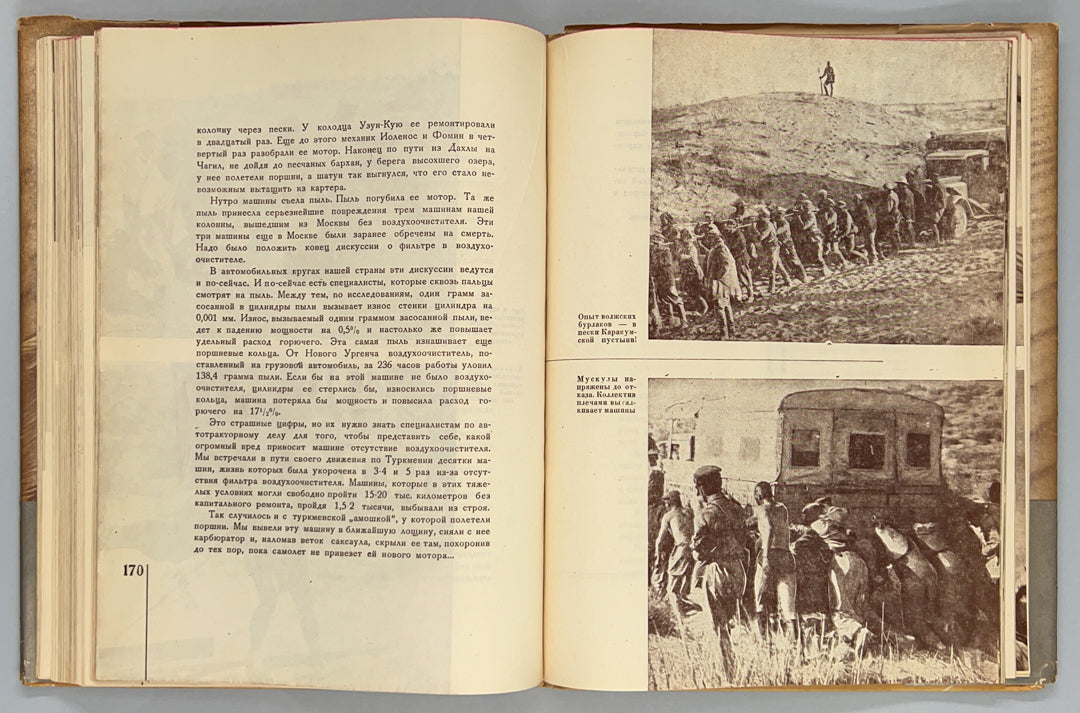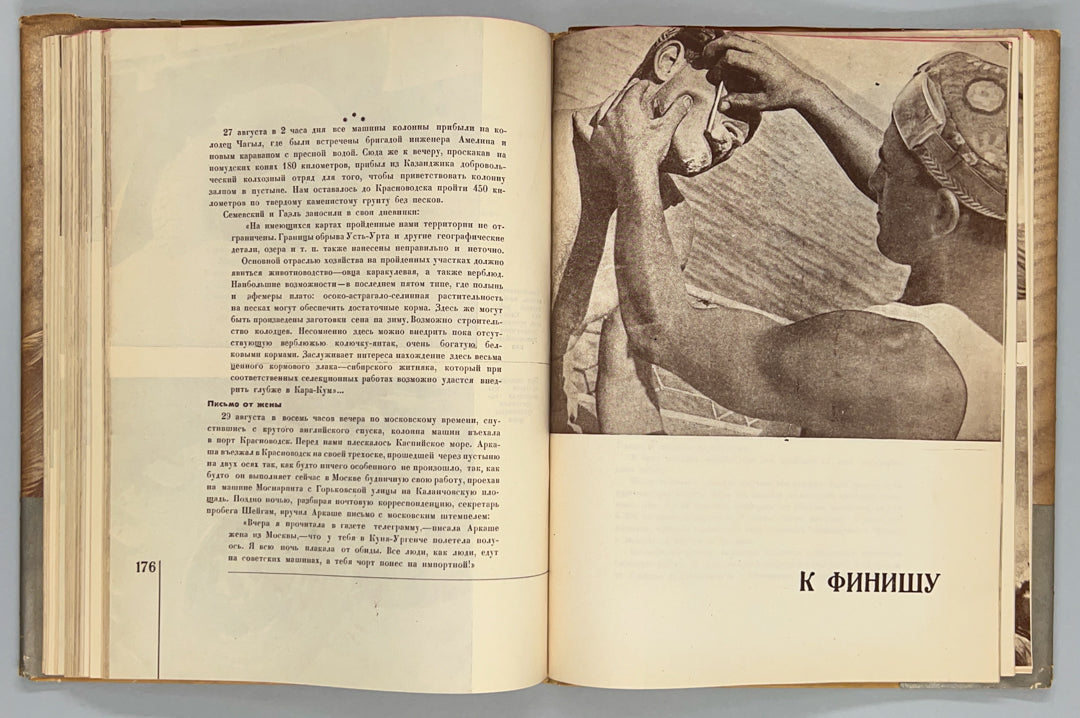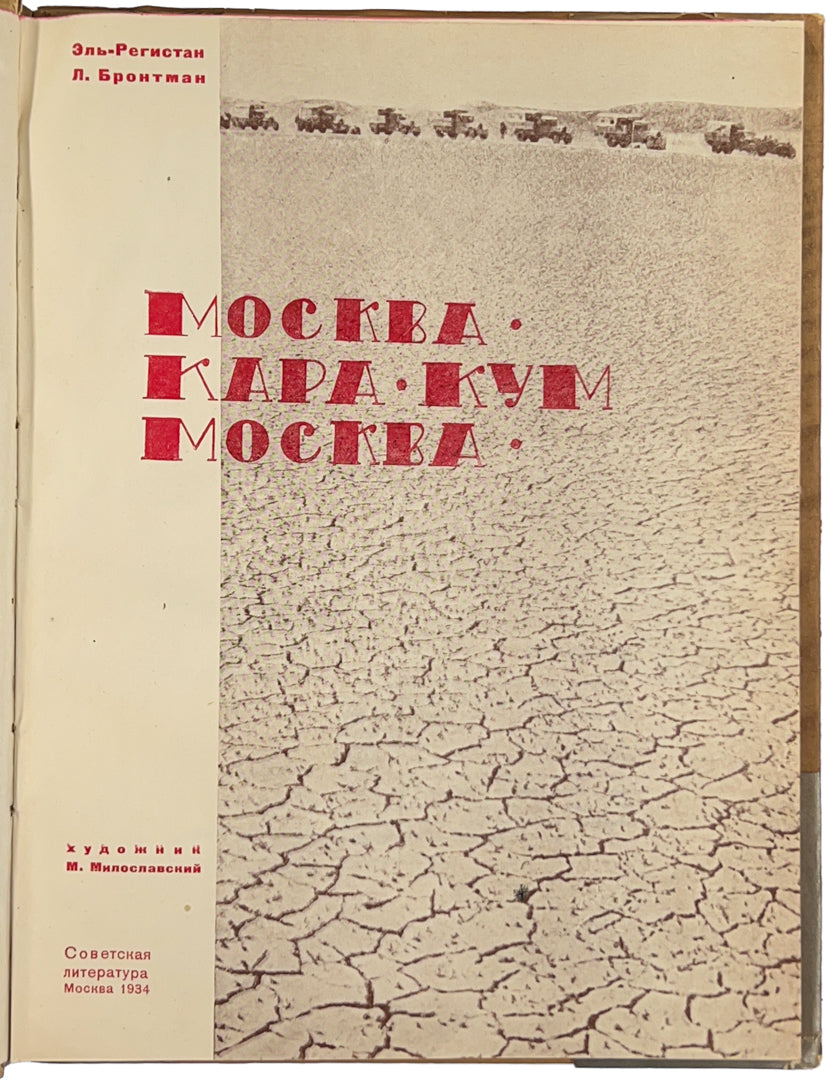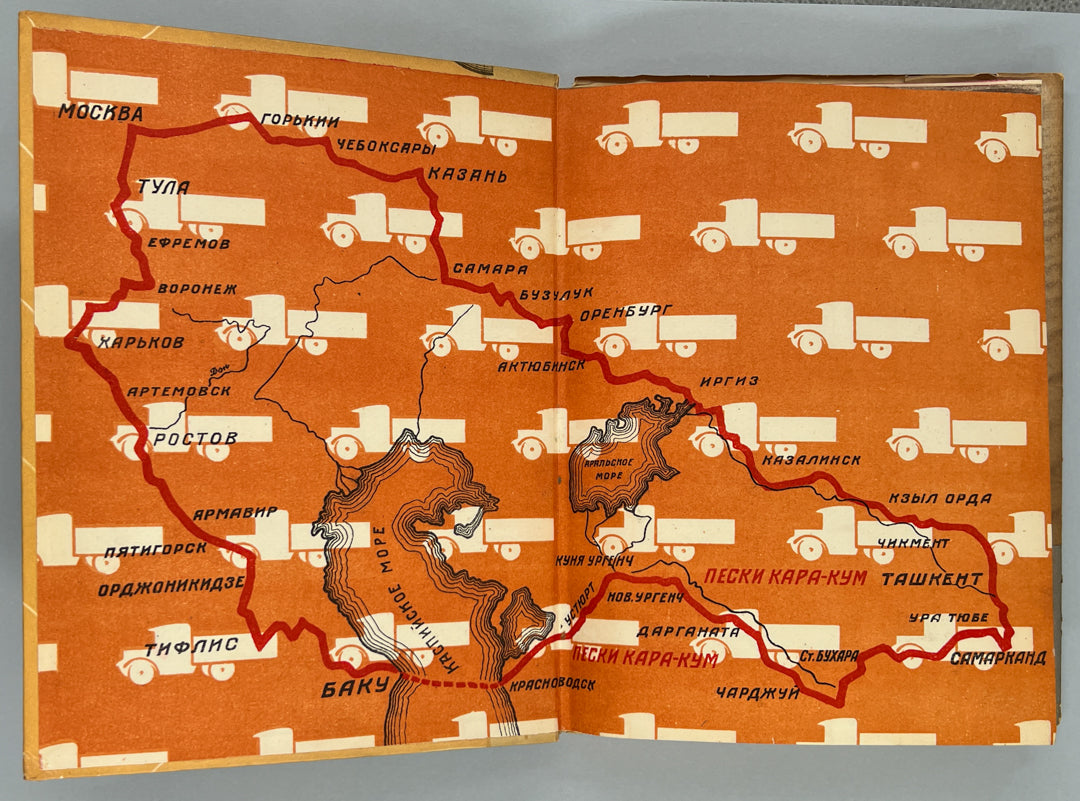El-Registan; Brontman, L.
Moscow – Kara-Kum – Moscow. Photobook documenting the Karakum Desert car rally.
Moscow – Kara-Kum – Moscow. Photobook documenting the Karakum Desert car rally.
Regular price
$3,150.00 USD
Regular price
Sale price
$3,150.00 USD
Unit price
per
Couldn't load pickup availability
El-Registan; Brontman, L. [Moscow – Kara-Kum – Moscow]. Moskva – Kara-Kum – Moskva.
Photos by R. Karmen, Bogdan and Prekhner.
Book design by M. Miloslavskii.
Moskva, Sovetskaia literatura, 1934.
8vo, 226, [2] pp., ill.
In original pictorial paper-covered boards and pictorial dj. Illustrated endpapers (map), top edge red.
In good condition, overall wear to dj, small loss to dj spine, tears to dj, pencil marks to p. 12 and 14.
First edition. Printed in Simferopol. One of 15 000 copies published.
These travel notes are dedicated to the long-distance Karakum car rally of 1933, named after the desert in Central Asia, which stands out as one of the first rallies in the Soviet Union. The initiative for this rally came from AVTODOR (Society for the Advancement of Motorization and Road Improvement), with the goal of promoting motorization in the USSR and advancing road construction.
Throughout the car rally, 96 participants covered a distance of more than 9,000 kilometers in 86 days. The majority of the participating cars were of Soviet make, including the GAZ-A, the first passenger car produced in the Soviet Union, a near-exact copy of the Ford Model A from 1930, along with some modified models and three Ford-Timken vehicles. Interestingly, these Fords were initially presented as competitors but performed poorly in the rally, as reported in newspaper articles. As the event progressed, drivers changed their preferences, ultimately favoring national cars. This shift in preference underscored the success of AVTODOR's promotional efforts.
Of particular interest are the notes about the Central Asia segment of the rally, which traversed the territories of the Kazakh ASSR (from 1936 - SSR), Uzbek SSR, Tajik SSR, and Turkmen SSR. In addition to information about road conditions, the book provides a brief history of the regions, stories about the everyday life of the people in these areas, and discussions on the agricultural sector, with a special focus on land improvement. It is worth noting that, on one side, the book aimed to contribute to infrastructure development, while on the other, it played a role in incorporating the remote Kara Kum desert of Turkmenistan into Soviet cultural geography and establishing it in the public imagination.
The authors of the book were prominent journalists of that time who participated in the rally: Lazar Brontman (1905-1953), the future deputy chief of the military department of the newspaper 'Pravda', and El-Registan (Gabriel Urekliants; 1899-1945), a co-author of the lyrics of the State Anthem of the USSR.
This book is adorned with a wealth of rare photographs taken by Roman Carmen (1906-1978), a film director and war cinematographer who rose to prominence as one of the most influential figures in documentary filmmaking, not only in the USSR. In 1933, he even released a film documenting the rally. Another photographer whose work graces this book is Mikhail Prekhner (1911-1941), who tragically lost his life while participating in defensive battles in Estonia as a war correspondent.
It is interesting to note that in 1935, 'Moscow – Kara Kum – Moscow' was published in Kyiv in Yiddish.
OCLC locates five copies of this edition: in the British Library, the Prinston University Library, the Indiana University Library, the Yale University Library, and the University of Central Asia Library (Kyrgyzstan).
